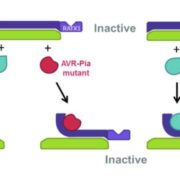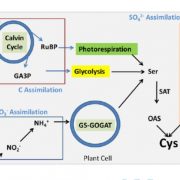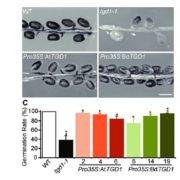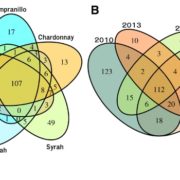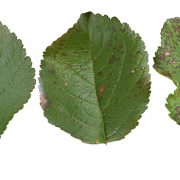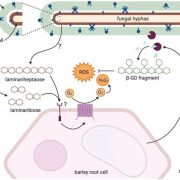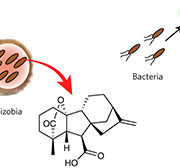Laccase Confers Biotic Stress Tolerance in Cotton
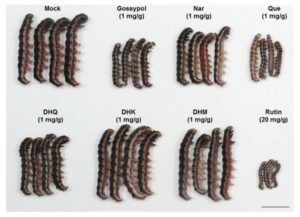 Cotton (Gossypium spp.) is a globally cultivated globally crop of vast economic importance. Pathogens and pests are major limitations to cotton yield and quality. Verticillium wilt, caused by the fungus Verticillium dahliae, is the disease most detrimental to cotton production. Cotton bollworm (Helicoverpa armigera), once the most serious insect pest of cotton, has been well controlled by the widely planted Bt cotton. Monocultures of Bt cotton, however, can lead to pest resistance; and in fields planted with Bt cotton, the decreased spraying of pesticides has resulted in non-Bt-targeted pests becoming new key pests, particularly piercing-sucking insects such as cotton aphid (Aphis gosypii). Phenylpropanoid metabolism is the most important secondary metabolic pathway involved in plant defense against biotic and abiotic stresses. Lignin synthesis is one of the branches of the phenylpropanoid pathway, and the polymerization of monolignol to form lignin provides mechanical strength and reinforces cell walls to provide a physical barrier to limit pathogen colonization. Previous work has shown that laccases function as lignin polymerization enzymes. Using this information, Hu et al. (10.1104/pp.17.01628) have developed a new strategy for the engineering of cotton resistance to both fungal pathogens and insect pests. They report that the over-expression of GhLac1 leads to an increase in lignification that is associated with increased tolerances to the fungal pathogen Verticillium dahliae and to the insect pests cotton bollworm (Helicoverpa armigera) and cotton aphid (Aphis gosypii). Suppression of GhLac1 expression leads to a redirection of the metabolic flux through the phenylpropanoid pathway, leading to the accumulation of jasmonic acid and secondary metabolites that confer resistance to Verticillium dahliae and cotton bollworm; but leading to an increased susceptibility to cotton aphid. Plant laccases therefore provide a new molecular tool to engineer pest and pathogen resistance in crops.
Cotton (Gossypium spp.) is a globally cultivated globally crop of vast economic importance. Pathogens and pests are major limitations to cotton yield and quality. Verticillium wilt, caused by the fungus Verticillium dahliae, is the disease most detrimental to cotton production. Cotton bollworm (Helicoverpa armigera), once the most serious insect pest of cotton, has been well controlled by the widely planted Bt cotton. Monocultures of Bt cotton, however, can lead to pest resistance; and in fields planted with Bt cotton, the decreased spraying of pesticides has resulted in non-Bt-targeted pests becoming new key pests, particularly piercing-sucking insects such as cotton aphid (Aphis gosypii). Phenylpropanoid metabolism is the most important secondary metabolic pathway involved in plant defense against biotic and abiotic stresses. Lignin synthesis is one of the branches of the phenylpropanoid pathway, and the polymerization of monolignol to form lignin provides mechanical strength and reinforces cell walls to provide a physical barrier to limit pathogen colonization. Previous work has shown that laccases function as lignin polymerization enzymes. Using this information, Hu et al. (10.1104/pp.17.01628) have developed a new strategy for the engineering of cotton resistance to both fungal pathogens and insect pests. They report that the over-expression of GhLac1 leads to an increase in lignification that is associated with increased tolerances to the fungal pathogen Verticillium dahliae and to the insect pests cotton bollworm (Helicoverpa armigera) and cotton aphid (Aphis gosypii). Suppression of GhLac1 expression leads to a redirection of the metabolic flux through the phenylpropanoid pathway, leading to the accumulation of jasmonic acid and secondary metabolites that confer resistance to Verticillium dahliae and cotton bollworm; but leading to an increased susceptibility to cotton aphid. Plant laccases therefore provide a new molecular tool to engineer pest and pathogen resistance in crops.


